Asuntos Tradicionalistas
 |
 |
 |
 |
 |
 |
 |
Misa Dialogada - CLIII
La "herejía antilitúrgica"
Dado que existen muchos puntos de coincidencia entre el Movimiento Modernista y el Movimiento Litúrgico, sería imposible sostener que este último debió su origen al abad de Solesmes, Dom Prosper Guéranger. Eso equivaldría a decir que los cambios en el Rito Romano desde comienzos del siglo XX hasta la víspera del Concilio Vaticano II fueron el legado de Dom Guéranger.
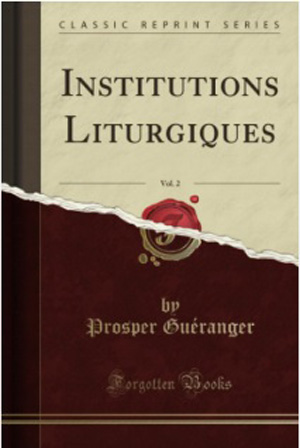 Esta afirmación puede refutarse fácilmente usando los argumentos presentados por el propio Dom Guéranger en sus Instituciones Litúrgicas. El volumen 1 de esta obra contiene un capítulo titulado “La herejía antilitúrgica”, en el cual ofreció una lista de verificación de 12 características observadas en los reformadores progresistas de Francia que introdujeron cambios en el
Breviario Romano y el Misal. Es imposible no notar que parecen un resumen de todos los cambios litúrgicos que condujeron a la creación del Novus Ordo.
Esta afirmación puede refutarse fácilmente usando los argumentos presentados por el propio Dom Guéranger en sus Instituciones Litúrgicas. El volumen 1 de esta obra contiene un capítulo titulado “La herejía antilitúrgica”, en el cual ofreció una lista de verificación de 12 características observadas en los reformadores progresistas de Francia que introdujeron cambios en el
Breviario Romano y el Misal. Es imposible no notar que parecen un resumen de todos los cambios litúrgicos que condujeron a la creación del Novus Ordo.
Analicemos cada uno de los 12 puntos de Dom Guéranger, citando sus Instituciones Litúrgicas.
1. Odio a la Tradición
“La primera característica de la herejía antilitúrgica es el odio a la tradición tal como se encuentra en las fórmulas usadas en el Culto Divino. No puede dejar de notarse este rasgo particular en todos los herejes que hemos mencionado, desde Vigilancio hasta Calvino, y la razón es fácil de explicar.
“Todo sectario que desee introducir una nueva doctrina se encuentra, inevitablemente, frente a la Liturgia, que es la Tradición en su expresión más fuerte, y no puede descansar hasta haber silenciado esa voz, hasta haber arrancado esas páginas que custodian la fe de los siglos pasados.” 1
Lo mismo sucedió, naturalmente, con los reformadores del siglo XX, que tuvieron problemas con varias doctrinas católicas —notablemente la realidad de la Misa como Sacrificio, la Presencia Real y el poder del sacerdote en la Consagración—, todas ellas negadas por Lutero. Al igual que sus homólogos del siglo XVI, también se enfrentaron al gran problema de la lex orandi, que desde tiempos apostólicos había sido el testimonio continuo de la verdadera Fe Católica.
Dom Guéranger señaló las consecuencias inevitables de cambiar la liturgia para adaptarla a nuevas posiciones doctrinales, advirtiendo sobre su potencial para destruir la Fe de manera generalizada:
 “En efecto, ¿cómo podrían el luteranismo, el calvinismo o el anglicanismo establecerse y mantener su influencia sobre las masas? Todo lo que tuvieron que hacer fue sustituir nuevos libros y nuevas fórmulas en lugar de los antiguos libros y fórmulas, y su trabajo estaba hecho. Ya nada molestaba a los nuevos maestros; podían continuar predicando como quisieran: la fe del pueblo quedaba desde entonces sin defensa.” 2
“En efecto, ¿cómo podrían el luteranismo, el calvinismo o el anglicanismo establecerse y mantener su influencia sobre las masas? Todo lo que tuvieron que hacer fue sustituir nuevos libros y nuevas fórmulas en lugar de los antiguos libros y fórmulas, y su trabajo estaba hecho. Ya nada molestaba a los nuevos maestros; podían continuar predicando como quisieran: la fe del pueblo quedaba desde entonces sin defensa.” 2
Podemos ver un paralelo aquí con la Nueva Misa de Pablo VI, que fue elaborada por los promotores del Movimiento Litúrgico con la colaboración de seis observadores protestantes. Como ejercicio de conciliación, muchos de los cambios autorizados en el nuevo rito coincidían teológicamente con puntos de doctrina rechazados por Lutero.
Es muy significativo que, cuando se produjo el Novus Ordo en 1969, todos los elementos de la antigua Misa que ofendían la sensibilidad protestante fueron minimizados, distorsionados o simplemente eliminados.
El resultado fue que la mayoría de las oraciones y gestos de la Misa Romana tradicional fueron suprimidos (por ejemplo, la mayoría de las Colectas, el Ofertorio, el Placeat Tibi, las genuflexiones —incluidas las de la Elevación—); drásticamente reducidos (como el Confiteor); mutilados y convertidos en opcionales (como el Canon); o alterados y colocados en un contexto diferente (por ejemplo, las Palabras de la Consagración presentadas como una narración, o la Comunión entendida como una comida fraterna en la que todos participan).
Estos son solo algunos ejemplos de un ataque mucho más amplio contra la Misa tradicional, promovido por clérigos católicos para agradar a los protestantes.
2. El enfoque de “solo la Biblia”
“De hecho, este es el segundo principio de la secta antilitúrgica: sustituir las fórmulas compuestas por la Iglesia por lecturas de la Sagrada Escritura.” 3
 Después de que los protestantes del siglo XVI abandonaran la creencia en el Santo Sacrificio de la Misa, rechazaron la lex orandi católica por considerarla “no bíblica” y compusieron un nuevo servicio de comunión basado en la alabanza, la acción de gracias y la autoofrenda. Esto provocó la desaparición, en sus servicios, de toda fórmula que oliera a catolicismo.
Después de que los protestantes del siglo XVI abandonaran la creencia en el Santo Sacrificio de la Misa, rechazaron la lex orandi católica por considerarla “no bíblica” y compusieron un nuevo servicio de comunión basado en la alabanza, la acción de gracias y la autoofrenda. Esto provocó la desaparición, en sus servicios, de toda fórmula que oliera a catolicismo.
Podemos estar seguros de que Dom Guéranger, escribiendo en el siglo anterior, nunca habría imaginado, y mucho menos aprobado, una política que exalta la Escritura por encima de la Tradición:
“Esto conlleva dos ventajas para los miembros de las sectas protestantes: primero, silenciar la voz de la Tradición, a la que consideran una amenaza constante. Luego, la ventaja de propagar y sostener sus dogmas mediante la afirmación y la negación. Por negación, al pasar en silencio, con astucia, los textos que expresan doctrinas opuestas a los errores que desean propagar; por afirmación, al enfatizar pasajes truncados que muestran solo una parte de la verdad y ocultan la otra a los ojos del pueblo sencillo.” 4
Un ejemplo notable de un pasaje truncado en la Nueva Misa es 1 Corintios 11:27-29, donde San Pablo advierte severamente que los fieles deben “discernir” lo que reciben y que la comunión indigna equivale a comer y beber su propia condenación.
Estos dos versículos fueron eliminados por el Consilium, ocultando a los fieles la verdad esencial de que deben estar en gracia para recibir la Sagrada Comunión. Es significativo que, mientras los versículos omitidos de San Pablo figuran con destaque en el rito tradicional, 5 su omisión en la liturgia moderna ha tenido consecuencias lamentables. Se ha hecho cada vez más evidente que la idea de la recepción digna y la necesidad de la Confesión para lograrla han desaparecido casi por completo de la conciencia de muchos católicos, tanto clérigos como laicos.
Dom Guéranger señaló la razón detrás de la preferencia protestante por la Escritura: permitir que los pasajes seleccionados sean interpretados según la opinión de cada persona.
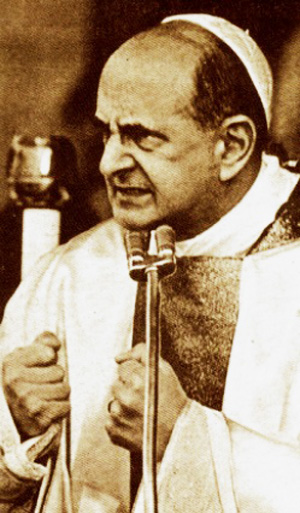 “En todas las épocas, y bajo cualquier forma de sectarismo, será lo mismo: sin fórmulas eclesiásticas, solo la Sagrada Escritura, pero interpretada, seleccionada y presentada por quienes buscan beneficiarse de la innovación.
“En todas las épocas, y bajo cualquier forma de sectarismo, será lo mismo: sin fórmulas eclesiásticas, solo la Sagrada Escritura, pero interpretada, seleccionada y presentada por quienes buscan beneficiarse de la innovación.
“La trampa es peligrosa para los sencillos, y solo mucho tiempo después se dan cuenta de haber sido engañados, y que la palabra de Dios, ‘una espada de dos filos’, como la llama el Apóstol, ha causado grandes heridas, porque ha sido manipulada por los hijos de la perdición.” 6
En la reforma del Oficio Divino por parte del Consilium, las Escrituras también fueron manipuladas para eliminar referencias a temas “negativos”, como la ira divina, considerados ofensivos para la sensibilidad moderna. El arzobispo Bugnini registró que fue Pablo VI quien, en una nota manuscrita dirigida al secretario del Consilium el 3 de enero de 1968, pidió que los llamados “Salmos imprecatorios” fueran completamente suprimidos. 7
No hay nada en la obra de Dom Guéranger que sugiera que él aprobara mutilar los pasajes evangélicos de la Misa que contienen referencias a realidades duras y desagradables como el Juicio Final, el castigo eterno y la condenación del mundo. El efecto inevitable de reducir o eliminar tales referencias fue debilitar o borrar el conocimiento de estos artículos de fe en la mente de los fieles.
3. Nuevas fórmulas y eslóganes revolucionarios
“El tercer principio de los herejes respecto a la reforma de la Liturgia... es fabricar e introducir diversas fórmulas llenas de perfidia, por las cuales el pueblo queda atrapado con mayor seguridad en el error, y así toda la estructura de la impía reforma quedará consolidada durante siglos.” 8
Sin darse cuenta, Dom Guéranger pudo haber estado describiendo las reformas litúrgicas del siglo XX que dieron origen a la liturgia del Novus Ordo. Durante décadas antes del Concilio Vaticano II, los partidarios del Movimiento Litúrgico trabajaron para transformar la naturaleza de la Misa tradicional —de un Santo Sacrificio ofrecido por el sacerdote— en una “celebración comunitaria” centrada en la lectura de la Biblia y la participación del pueblo en una comida fraterna. (El principal impulsor de este desarrollo fue el primer reformador, el P. Pius Parsch, quien inventó un apostolado bíblico-litúrgico).
Como resultado, la liturgia moderna fue reconfigurada principalmente como una Liturgia de la Palabra más una combinación de cantos de alabanza que eclipsaron la creencia católica en la Presencia Real. Luego se inventaron nuevas fórmulas para reforzar una comprensión distinta de la Misa basada en eslóganes como “participación activa”, “diálogo”, “celebración comunitaria” y “apostolado litúrgico” de los laicos.
4. Retorno a los primeros siglos cristianos
 La cuarta herejía antilitúrgica se refiere a la preferencia por descartar 1.500 años de formas católicas de culto y volver a las llamadas “fuentes puras” de la liturgia, antes de que fueran “corrompidas” por la Iglesia. Dom Guéranger criticó severamente esta política como una estrategia típica de los herejes:
La cuarta herejía antilitúrgica se refiere a la preferencia por descartar 1.500 años de formas católicas de culto y volver a las llamadas “fuentes puras” de la liturgia, antes de que fueran “corrompidas” por la Iglesia. Dom Guéranger criticó severamente esta política como una estrategia típica de los herejes:
“Todos los sectarios, sin excepción, comienzan reivindicando los derechos de la antigüedad. Quieren cortar el cristianismo de todo lo que los errores y pasiones humanas han mezclado en él, de todo lo que es ‘falso’ o ‘indigno de Dios’. Dicen querer solo lo primitivo, y pretenden regresar a la cuna de las instituciones cristianas.
Para lograrlo, podan, borran, recortan; todo cae bajo sus golpes, y mientras uno espera ver reaparecer la pureza original del Culto Divino, se encuentra rodeado de nuevas fórmulas nacidas apenas la noche anterior, indudablemente humanas, ya que quien las creó sigue vivo.” 9
Bugnini y sus seguidores en el Movimiento Litúrgico estaban muy activos cuando inventaron una nueva liturgia para reemplazar la Misa y los Sacramentos tradicionales en 1968-1969, demostrando así que sus invenciones no eran de origen divino, sino un constructo artificial diseñado más o menos sobre la marcha para servir a una agenda neomodernista en la época presente.
Continuará


Analicemos cada uno de los 12 puntos de Dom Guéranger, citando sus Instituciones Litúrgicas.
1. Odio a la Tradición
“La primera característica de la herejía antilitúrgica es el odio a la tradición tal como se encuentra en las fórmulas usadas en el Culto Divino. No puede dejar de notarse este rasgo particular en todos los herejes que hemos mencionado, desde Vigilancio hasta Calvino, y la razón es fácil de explicar.
“Todo sectario que desee introducir una nueva doctrina se encuentra, inevitablemente, frente a la Liturgia, que es la Tradición en su expresión más fuerte, y no puede descansar hasta haber silenciado esa voz, hasta haber arrancado esas páginas que custodian la fe de los siglos pasados.” 1
Lo mismo sucedió, naturalmente, con los reformadores del siglo XX, que tuvieron problemas con varias doctrinas católicas —notablemente la realidad de la Misa como Sacrificio, la Presencia Real y el poder del sacerdote en la Consagración—, todas ellas negadas por Lutero. Al igual que sus homólogos del siglo XVI, también se enfrentaron al gran problema de la lex orandi, que desde tiempos apostólicos había sido el testimonio continuo de la verdadera Fe Católica.
Dom Guéranger señaló las consecuencias inevitables de cambiar la liturgia para adaptarla a nuevas posiciones doctrinales, advirtiendo sobre su potencial para destruir la Fe de manera generalizada:

Los herejes siempre intentan abolir la Tradición
y crear nuevas fórmulas litúrgicas
Podemos ver un paralelo aquí con la Nueva Misa de Pablo VI, que fue elaborada por los promotores del Movimiento Litúrgico con la colaboración de seis observadores protestantes. Como ejercicio de conciliación, muchos de los cambios autorizados en el nuevo rito coincidían teológicamente con puntos de doctrina rechazados por Lutero.
Es muy significativo que, cuando se produjo el Novus Ordo en 1969, todos los elementos de la antigua Misa que ofendían la sensibilidad protestante fueron minimizados, distorsionados o simplemente eliminados.
El resultado fue que la mayoría de las oraciones y gestos de la Misa Romana tradicional fueron suprimidos (por ejemplo, la mayoría de las Colectas, el Ofertorio, el Placeat Tibi, las genuflexiones —incluidas las de la Elevación—); drásticamente reducidos (como el Confiteor); mutilados y convertidos en opcionales (como el Canon); o alterados y colocados en un contexto diferente (por ejemplo, las Palabras de la Consagración presentadas como una narración, o la Comunión entendida como una comida fraterna en la que todos participan).
Estos son solo algunos ejemplos de un ataque mucho más amplio contra la Misa tradicional, promovido por clérigos católicos para agradar a los protestantes.
2. El enfoque de “solo la Biblia”
“De hecho, este es el segundo principio de la secta antilitúrgica: sustituir las fórmulas compuestas por la Iglesia por lecturas de la Sagrada Escritura.” 3

Abadía de Solesmes, sede de Dom Guéranger
Podemos estar seguros de que Dom Guéranger, escribiendo en el siglo anterior, nunca habría imaginado, y mucho menos aprobado, una política que exalta la Escritura por encima de la Tradición:
“Esto conlleva dos ventajas para los miembros de las sectas protestantes: primero, silenciar la voz de la Tradición, a la que consideran una amenaza constante. Luego, la ventaja de propagar y sostener sus dogmas mediante la afirmación y la negación. Por negación, al pasar en silencio, con astucia, los textos que expresan doctrinas opuestas a los errores que desean propagar; por afirmación, al enfatizar pasajes truncados que muestran solo una parte de la verdad y ocultan la otra a los ojos del pueblo sencillo.” 4
Un ejemplo notable de un pasaje truncado en la Nueva Misa es 1 Corintios 11:27-29, donde San Pablo advierte severamente que los fieles deben “discernir” lo que reciben y que la comunión indigna equivale a comer y beber su propia condenación.
Estos dos versículos fueron eliminados por el Consilium, ocultando a los fieles la verdad esencial de que deben estar en gracia para recibir la Sagrada Comunión. Es significativo que, mientras los versículos omitidos de San Pablo figuran con destaque en el rito tradicional, 5 su omisión en la liturgia moderna ha tenido consecuencias lamentables. Se ha hecho cada vez más evidente que la idea de la recepción digna y la necesidad de la Confesión para lograrla han desaparecido casi por completo de la conciencia de muchos católicos, tanto clérigos como laicos.
Dom Guéranger señaló la razón detrás de la preferencia protestante por la Escritura: permitir que los pasajes seleccionados sean interpretados según la opinión de cada persona.

Pablo VI no soportaba los Salmos imprecatorios
“La trampa es peligrosa para los sencillos, y solo mucho tiempo después se dan cuenta de haber sido engañados, y que la palabra de Dios, ‘una espada de dos filos’, como la llama el Apóstol, ha causado grandes heridas, porque ha sido manipulada por los hijos de la perdición.” 6
En la reforma del Oficio Divino por parte del Consilium, las Escrituras también fueron manipuladas para eliminar referencias a temas “negativos”, como la ira divina, considerados ofensivos para la sensibilidad moderna. El arzobispo Bugnini registró que fue Pablo VI quien, en una nota manuscrita dirigida al secretario del Consilium el 3 de enero de 1968, pidió que los llamados “Salmos imprecatorios” fueran completamente suprimidos. 7
No hay nada en la obra de Dom Guéranger que sugiera que él aprobara mutilar los pasajes evangélicos de la Misa que contienen referencias a realidades duras y desagradables como el Juicio Final, el castigo eterno y la condenación del mundo. El efecto inevitable de reducir o eliminar tales referencias fue debilitar o borrar el conocimiento de estos artículos de fe en la mente de los fieles.
3. Nuevas fórmulas y eslóganes revolucionarios
“El tercer principio de los herejes respecto a la reforma de la Liturgia... es fabricar e introducir diversas fórmulas llenas de perfidia, por las cuales el pueblo queda atrapado con mayor seguridad en el error, y así toda la estructura de la impía reforma quedará consolidada durante siglos.” 8
Sin darse cuenta, Dom Guéranger pudo haber estado describiendo las reformas litúrgicas del siglo XX que dieron origen a la liturgia del Novus Ordo. Durante décadas antes del Concilio Vaticano II, los partidarios del Movimiento Litúrgico trabajaron para transformar la naturaleza de la Misa tradicional —de un Santo Sacrificio ofrecido por el sacerdote— en una “celebración comunitaria” centrada en la lectura de la Biblia y la participación del pueblo en una comida fraterna. (El principal impulsor de este desarrollo fue el primer reformador, el P. Pius Parsch, quien inventó un apostolado bíblico-litúrgico).
Como resultado, la liturgia moderna fue reconfigurada principalmente como una Liturgia de la Palabra más una combinación de cantos de alabanza que eclipsaron la creencia católica en la Presencia Real. Luego se inventaron nuevas fórmulas para reforzar una comprensión distinta de la Misa basada en eslóganes como “participación activa”, “diálogo”, “celebración comunitaria” y “apostolado litúrgico” de los laicos.
4. Retorno a los primeros siglos cristianos

Monseñor Bugnini aplicó a la liturgia católica todas las normas condenadas por Dom Guéranger
“Todos los sectarios, sin excepción, comienzan reivindicando los derechos de la antigüedad. Quieren cortar el cristianismo de todo lo que los errores y pasiones humanas han mezclado en él, de todo lo que es ‘falso’ o ‘indigno de Dios’. Dicen querer solo lo primitivo, y pretenden regresar a la cuna de las instituciones cristianas.
Para lograrlo, podan, borran, recortan; todo cae bajo sus golpes, y mientras uno espera ver reaparecer la pureza original del Culto Divino, se encuentra rodeado de nuevas fórmulas nacidas apenas la noche anterior, indudablemente humanas, ya que quien las creó sigue vivo.” 9
Bugnini y sus seguidores en el Movimiento Litúrgico estaban muy activos cuando inventaron una nueva liturgia para reemplazar la Misa y los Sacramentos tradicionales en 1968-1969, demostrando así que sus invenciones no eran de origen divino, sino un constructo artificial diseñado más o menos sobre la marcha para servir a una agenda neomodernista en la época presente.
Continuará
- Prosper Guéranger, Instituciones Litúrgicas, 4 vols., París: Société Générale de Librairie Catholique, vol 1, 1878, p. 397.
- Ibid.
- Ibid., p. 398.
- Ibid.
- Estos se encuentran en las Epístolas del Jueves Santo y del Corpus Christi, respectivamente. Además, la Secuencia Lauda Sion Salvatorem, cantada durante la Misa de Corpus Christi, contiene un recordatorio de la advertencia de San Pablo de que el Sacramento tiene un efecto dual para quienes lo reciben con las disposiciones correctas o incorrectas: Mors est malis, vita bonis (muerte para los culpables, vida para los dignos).
- Ibid., p. 399.
- Annibale Bugnini, La reforma de la liturgia (1948-1975), Collegeville: Liturgical Press, 1990, p. 509. Las palabras registradas del Papa fueron: “En mi opinión, es mejor que se haga una selección de Salmos más adecuados para la oración cristiana, y que los Salmos imprecatorios e históricos sean omitidos (aunque estos últimos puedan usarse adecuadamente en ciertas circunstancias).”
- P. Guéranger, op. cit., p. 399
- Ibid., pp. 399-400

______________________
______________________
 Volume I |
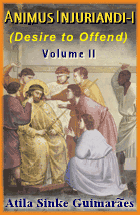 Volume II |
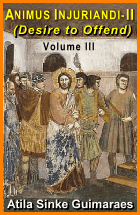 Volume III |
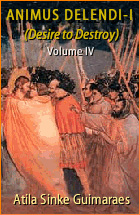 Volume IV |
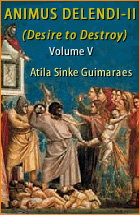 Volume V |
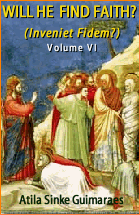 Volume VI |
 Volume VII |
 Volume VIII |
 Volume IX |
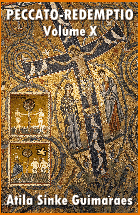 Volume X |
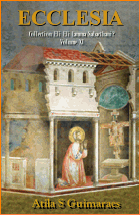 Volume XI |
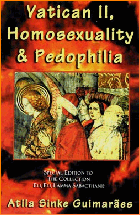 Special Edition |






